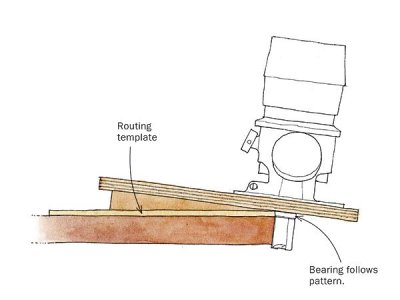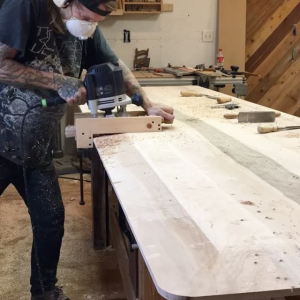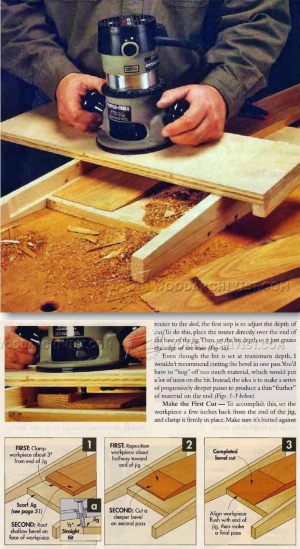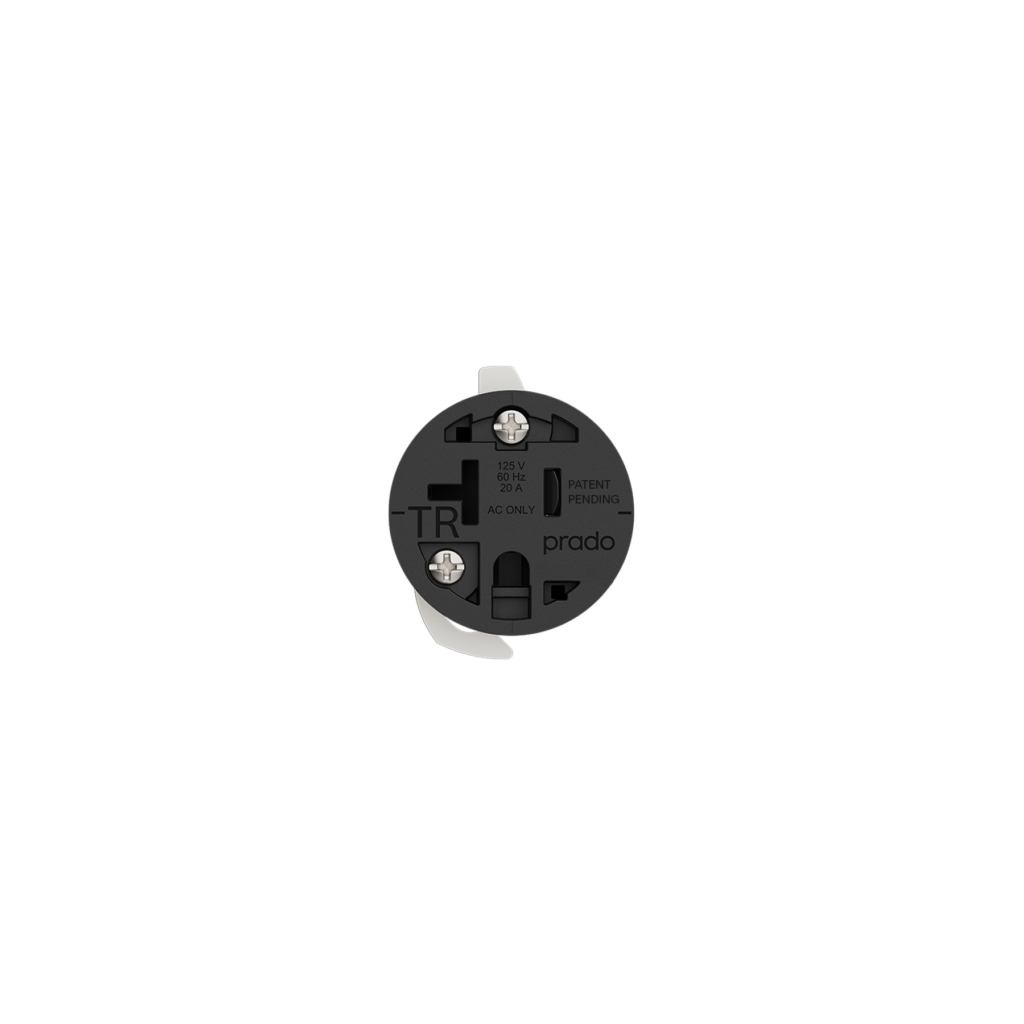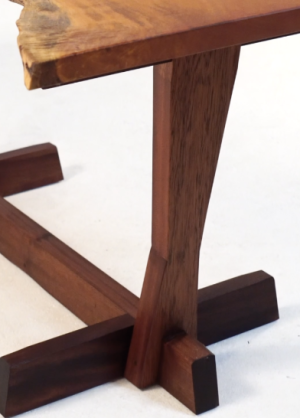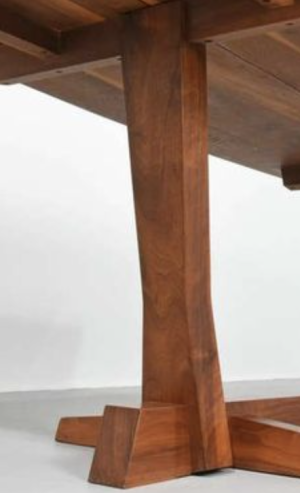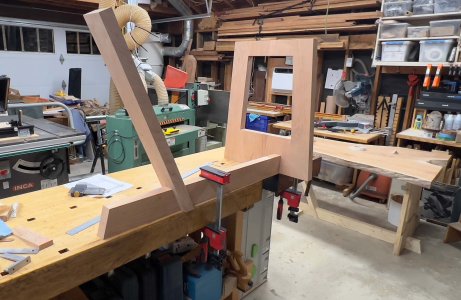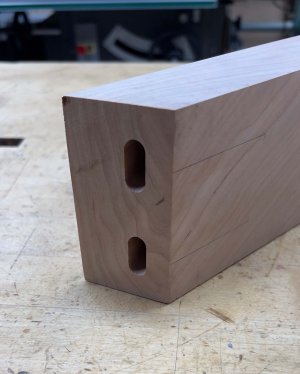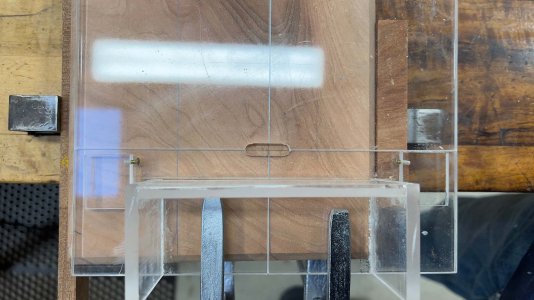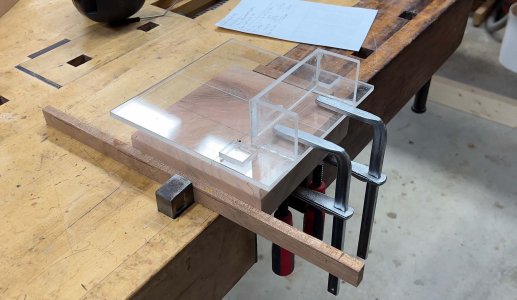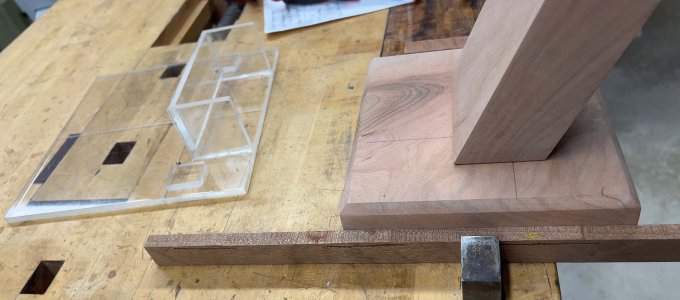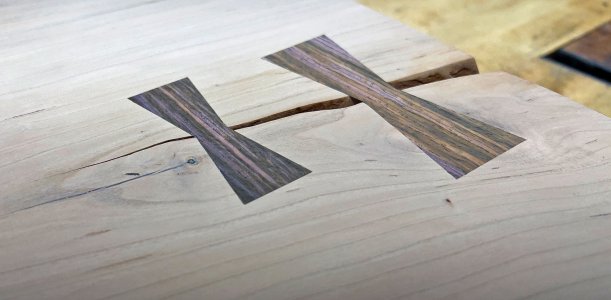smorgasbord
Member
First stab at a base design.
So, I just finished building a prototype out of scrap wood (mostly pine I think).
It works and hold the weight just fine. Bridle joints are pretty cool.
However, the table isn't stable horizontally at the single leg end. I can try to get some video, but what's going on is that the bottom stretcher is being twisted by forces when you push away on the table to roll your chair back from it. It's not going to fall or break or anything, but it's a bit disconcerting and unacceptable. Even with the top not on, I can move the top of the angled leg horizontally and see the bottom stretcher twist.
Of course, now my question is whether making this out of solid cherry instead of slapped together pine (which is pretty badly laminated I have to admit) will improve things enough. I'm suspecting not.
There could be many fixes, here are some off the top of my head:
1) Convert the angled leg into a wider leg assembly. It doesn't have to be near as wide as the main slab leg, maybe 8" would do.
2) Attach a foot the the end of the bottom stretcher (or near where it attaches to the lef), perpendicular to it. The idea is that the foot width will prevent that part of the stretcher from twisting since doing so would have to lift the whole table. This would be the same effect as #1, but using less wood.
This would be very similar to:
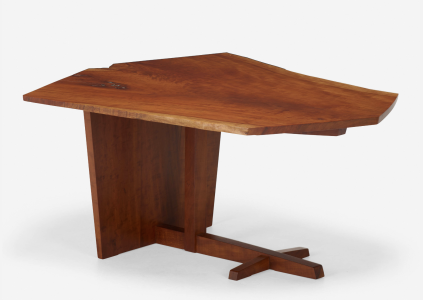
Except instead of the angled leg at the end, this one has a vertical leg near the slab leg.
3) I could just have two legs at the end away from the slab leg, and even lose the bottom stretcher. But, that's a whole different design aesthetic.
4) I could put a drawer stack at the far end. Again, not he aesthetic I'm looking for, even if more practical.
Anyway, just talking out out here. Thanks for listening.

